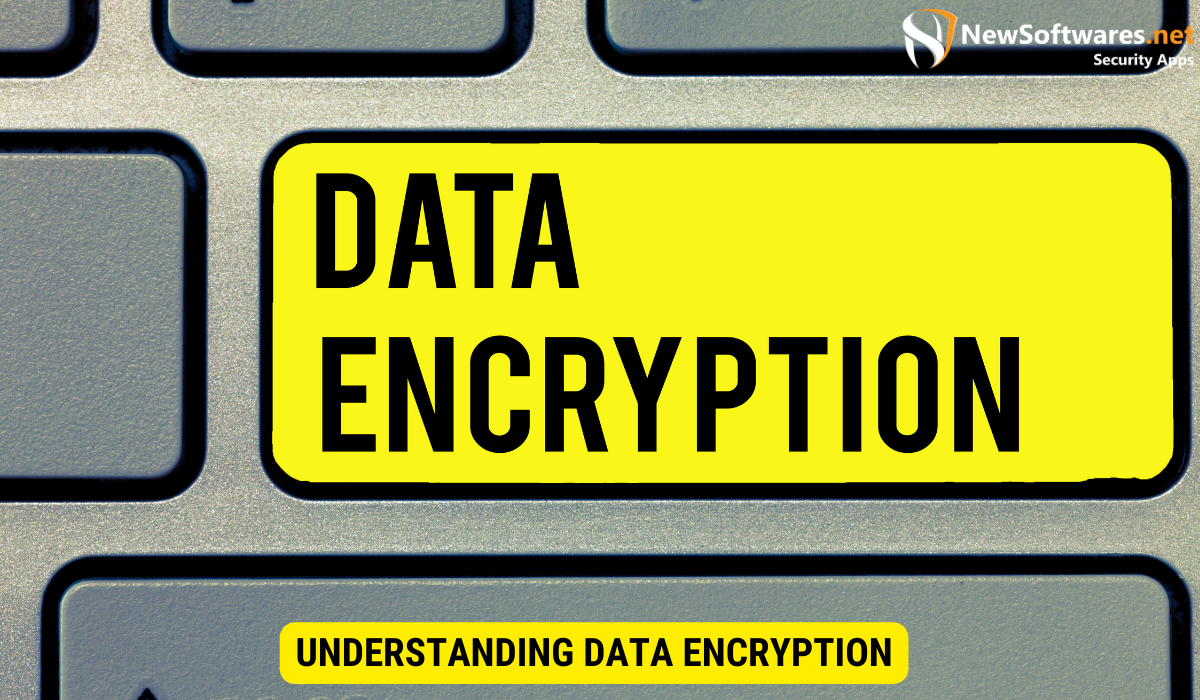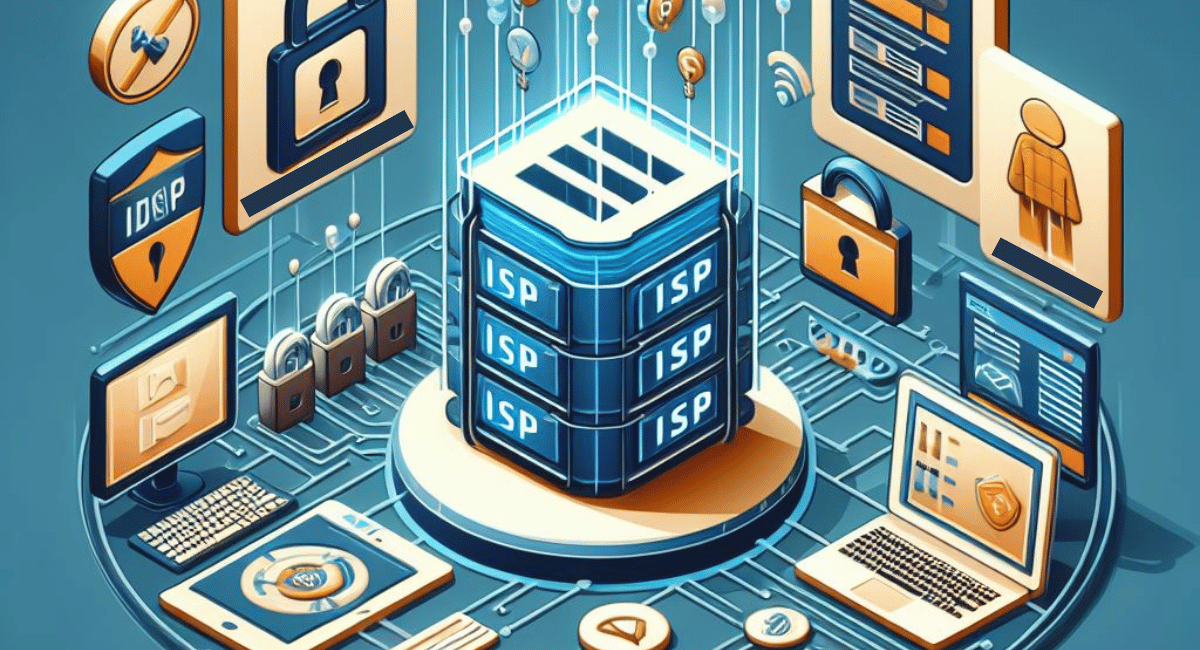Encrypted data appears as an unintelligible stream of characters to Internet Service Providers (ISPs), safeguarding its content. Encryption impacts ISP operations by limiting data visibility and introducing challenges, enhancing data security and privacy.
Data security has turn out to be a paramount concern for individuals and businesses in today’s digital age. With the increasing adoption of encryption to protect sensitive information, it’s essential to understand how this technology impacts the way Internet Service Providers (ISPs) interact with data. I will aim to illuminate what encrypted data looks like to ISPs and its implications on their operations.
Understanding Data Encryption

Data encryption is a method of transforming information into an unreadable format called ciphertext. Through complex algorithms, encryption ensures that data remains secure and only accessible to authorized individuals with the appropriate decryption key.
Encryption works by converting plain text, such as a message or file, into an encoded version that can only be decoded by the intended receiver. This process provides confidentiality and integrity, making it significantly more challenging for unauthorized individuals or entities, including ISPs, to access or manipulate the data.
When it comes to data encryption, some various techniques and protocols can be employed to enhance security. One such technique is known as “end-to-end encryption.” This method ensures that data is encrypted at the source until it reaches the intended recipient. By doing so, it eliminates the possibility of intermediaries gaining access to the sensitive information during transmission.
In addition to end-to-end encryption, another important concept in data encryption is “data-at-rest” encryption. This refers to the encryption of data when it is stored or saved on a device or server. By encrypting data at rest, even if an unauthorized individual gains physical access to the storage medium, they cannot read or understand the content without the decryption key.
The Basics of Data Encryption
Encryption relies on cryptographic algorithms that utilize mathematical functions to convert plaintext into ciphertext. These algorithms typically involve using keys, which are unique strings of characters that determine the encryption and decryption processes.
One commonly used encryption algorithm is the Advanced Encryption Standard (AES). AES is a symmetric encryption algorithm with a secure block size of 128 bits and key sizes of 128, 192, or 256 bits. It has become the de facto standard for encryption worldwide due to its strong security and efficiency.
Another widely used encryption algorithm is the Rivest-Shamir-Adleman (RSA) algorithm, which falls under the category of asymmetric encryption. RSA encryption involves using a public key for encryption and a private key for decryption. This type of encryption is often used when secure communication between two parties is required, such as online banking transactions or secure email communication.
While encryption provides a high level of security, it has limitations. One such limitation is the potential impact on performance. Encrypting and decrypting data requires computational resources, which can slow down the overall system performance, especially when dealing with large amounts of data.
The Role of Encryption in Data Security
Data encryption plays a vital role in safeguarding the security and privacy of sensitive information. Encryption serves as a powerful defense against data breaches and unauthorized access by rendering data unreadable to unauthorized parties.
Encryption guards against threats, such as interception during data transmission or storage. When data is encrypted, even if intercepted by ISPs or other third parties, they can’t decipher the contents without the decryption key.
Furthermore, encryption also helps organizations comply with data protection regulations and standards. Many industries, such as healthcare and finance, have specific data security and privacy requirements. Implementing robust encryption measures can help organizations meet these compliance obligations and avoid potential legal and financial consequences.
It is worth noting that encryption is just one piece of the puzzle regarding data security. While encryption protects data from unauthorized access, other security measures, such as strong access controls, firewalls, and intrusion detection systems, are essential to create a comprehensive and layered security framework.
In conclusion, data encryption is a vital component of modern-day information security. It provides a means to protect sensitive data from unauthorized access and ensures the confidentiality and integrity of information. By understanding the basics of data encryption and its role in data security, individuals and organizations can take proactive steps to safeguard their valuable data from potential threats.
How ISPs Interact with Data
ISPs are the internet’s gatekeepers, providing the necessary infrastructure and connectivity for users to access online resources. Understanding how ISPs interact with data is crucial in comprehending the impact of encryption on their operations.
The Function of ISPs in Data Transmission
ISPs play a vital role in transmitting data between devices and the internet. When you access a website or send an email, your data is routed through your ISP’s network to its destination. ISPs act as intermediaries, ensuring that data packets reach their intended recipients.
However, it’s important to note that ISPs do not have access to the contents of encrypted data packets. Encrypted traffic appears as an unintelligible stream of characters to ISPs, preventing them from viewing or understanding the information being transmitted.
The Limitations of ISP Data Access

While ISPs facilitate internet connectivity, their access to data is limited by encryption. Encrypted data is a barrier that prevents ISPs from intercepting and examining the contents of the information transmitted between users and servers.
This limitation imposes significant constraints on ISPs’ ability to monitor or analyze the data flowing through their networks. The encrypted nature of the data ensures that user privacy and the security of sensitive information remain intact.
The Appearance of Encrypted Data to ISPs
Encrypted data presents unique challenges to ISPs, as it obscures the contents of the transmitted information. This section delves into how ISPs perceive encrypted data and the difficulties they face in deciphering it.
Deciphering Encrypted vs. Unencrypted Data
From an ISP’s perspective, encrypted data differs significantly from unencrypted data regarding visibility and legibility. When unencrypted data is transmitted, ISPs can easily inspect and analyze the packets to determine the source, destination, and content of the information being exchanged.
However, when data is encrypted, ISPs encounter a complex and unintelligible stream of characters. This ciphertext provides no insights into the actual content or purpose of the transmitted data, posing a significant challenge for ISPs attempting to monitor or manipulate it.
The Invisibility of Encrypted Data Content
One of the fundamental aspects of encryption is that it conceals the actual content of the transmitted data. ISPs, unable to decipher the encrypted data, cannot view the underlying message or determine the information’s nature.
This invisibility provides a layer of protection for users, ensuring that their communication and data remain private. Encrypted data appears as an opaque barrier to ISPs, shielding the information from prying eyes and unauthorized access.
The Impact of Encryption on ISP Operations
While encryption provides significant benefits regarding data security and privacy, it also affects the operations and functionality of ISPs. This section explores the implications of encryption on data speed, performance, and ISP data management processes.
Effects on Data Speed and Performance
Encryption introduces an additional layer of complexity to data transmission, which can impact the speed and performance of internet connectivity. Encryption and encryption require computational resources and time, potentially introducing a slight delay in data transmission.
However, advancements in encryption technologies and the increasing processing power of modern devices have mitigated these effects to a great extent. Today, encryption can be implemented with minimal impact on data speed and performance, allowing for secure communication without compromising efficiency.
Implications for ISP Data Management
With the rise of encryption, ISPs face challenges in managing and analyzing the data flowing through their networks. The encrypted nature of data makes it difficult for ISPs to gain insights into user behavior, network traffic patterns, or potential security threats.
This limitation necessitates a shift in the way ISPs approach data management. Instead of relying solely on analyzing the content of data packets, ISPs must focus on other indicators and metadata to monitor network performance and address potential issues.
The Future of Data Encryption and ISPs

As technology continues to evolve, so does the encryption landscape. This section explores emerging encryption technologies and potential changes in ISP data handling.
Emerging Encryption Technologies
New encryption technologies are continually being developed to address emerging threats and enhance data security. These advancements aim to provide stronger encryption algorithms, faster processing, and improved key management systems.
Quantum encryption, for example, leverages the principles of quantum mechanics to create unbreakable encryption methods. As these technologies mature, ISPs will need to adapt and incorporate them into their network infrastructure to ensure data protection.
Potential Changes in ISP Data Handling
The increasing prevalence of encryption may prompt ISPs to adapt their data handling practices. While they may face limitations in accessing and analyzing encrypted data, ISPs can still monitor network traffic patterns, metadata, and other non-content information to ensure their networks’ efficient and secure operation.
Additionally, ISPs may collaborate with encryption solution providers to enhance their capabilities in managing and securing encrypted data. This collaboration can bridge the gap between ISPs’ need for network management and their customers’ need for data privacy.
Key Takeaways
- Encryption Basics: It transforms data into ciphertext, ensuring confidentiality and integrity.
- ISP Limitations: Encrypted data is unintelligible to ISPs, protecting user privacy.
- Data Speed and Performance: Encryption may introduce minimal delays, but modern technology mitigates these effects.
- ISP Data Management: ISPs must adapt to handle encrypted data by focusing on network indicators and metadata.
- Future Trends: Emerging encryption technologies and collaborations between ISPs and encryption solution providers will shape the future of data encryption.
FAQs
What is data encryption?
Data encryption is a method of converting information into an unreadable format (ciphertext) to ensure confidentiality and prevent unauthorized access.
How does encryption affect ISPs?
Encryption makes data appear as random characters to ISPs, limiting their ability to monitor or analyze its content.
Why is encryption important for data security?
Encryption protects data from interception and unauthorized access, ensuring privacy and confidentiality.
Can ISPs decipher encrypted data?
ISPs cannot decipher encrypted data as it appears as an opaque barrier to them, concealing the content.
How does encryption impact ISP data management?
Encryption introduces complexity and may slightly affect data speed, requiring ISPs to adapt their data management practices.
Conclusion
In conclusion, encrypted data poses a unique challenge to ISPs as it appears as an unreadable stream of characters, effectively protecting the contents from unauthorized access. While encryption enhances data security, it also impacts the operations of ISPs, requiring them to adapt their network management and data handling practices. As encryption technologies evolve, ISPs must stay abreast of these advancements to ensure the efficient and secure data transmission on their networks.
